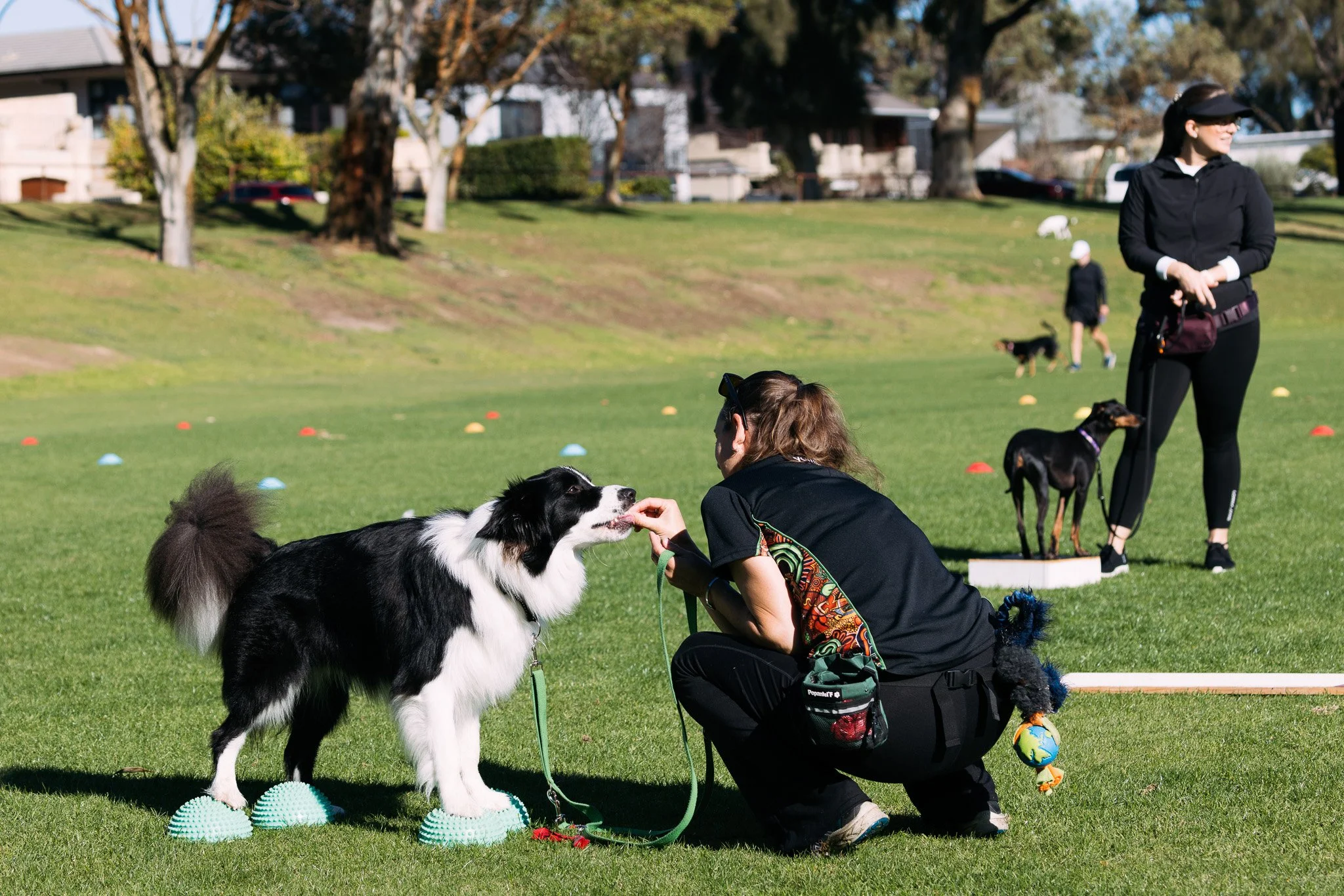The Power of Cue Words in Dog Training: Why Saying Less is More
When training your dog, cue words are a key tool for clear communication. Whether teaching basic commands like "sit" and "stay" or fun tricks such as "roll over" or "spin," using consistent verbal signals helps your dog understand what’s expected. But effective dog training isn’t just about the words—it’s also about how you use them. In training, less is more, and the fewer words you use, the more effective your communication will be.
In her book The Other End of the Leash, animal behaviourist Patricia McConnell explains that dogs respond much better to short, clear commands. McConnell emphasises that using just one word for each cue is crucial for dogs to distinguish the command. Long, complex phrases only confuse dogs, making it harder for them to grasp what you’re asking of them.
Why Short Cues Matter
Dogs process language differently from humans. They can’t understand full sentences or complex instructions the way we do. Instead, they rely on recognising specific sounds associated with actions. For example, a simple cue like "sit" is easy for your dog to identify and connect with the desired behaviour. When you pair short, consistent words with positive reinforcement like treats or praise, your dog learns to respond more quickly and reliably.
Saying something like "Can you please sit for me?" is overwhelming for a dog and dilutes the message. On the other hand, using just "sit" is clear and gets to the point.
How Many Times Should You Say a Cue Word?
The golden rule of dog training is to say the cue only once. Repeating the cue word multiple times, such as saying "sit, sit, sit," teaches your dog to ignore the first cue and wait for the second or third. This reduces the effectiveness of your command and slows down the learning process. When you say a cue just once, it signals to your dog that they need to act immediately.
What to Do If They Don’t Respond
If your dog doesn’t perform the desired behaviour after the first cue, don’t repeat the command. Instead, give them a moment to process it—sometimes dogs need a few seconds to respond. If they still don’t comply, guide them into the correct position. For example, if you’ve asked them to "sit" and they don’t, gently use a hand signal or lure them into a sitting position using a treat. Once they’re in the right position, praise them or offer a treat to reinforce the behaviour.
This way, your dog learns that the cue word means they should perform the action immediately, and they won’t get rewarded until they do.
When to Introduce a Cue Word
According to Laura VanArendonk Baugh, a cue word in dog training should be introduced only after the dog consistently performs the desired behaviour. By delaying the cue until the dog has learned the action, trainers can avoid pairing the word with incorrect responses, ensuring a more reliable association. Once the behaviour is clear and predictable, adding the cue word helps the dog understand what is being asked, leading to more precise and responsive obedience.
How to Use Cue Words Effectively
To get the most out of your cue words, follow these tips:
Stick to one word: As Patricia McConnell highlights, using just one word for each command helps your dog understand the cue clearly. For example, use "sit," "stay," or "down" instead of longer phrases.
Say the cue once: Repeating the command only teaches your dog that they don’t need to act immediately. Give the command once and allow them time to respond.
Guide if necessary: If they don’t respond, use a hand signal or gently guide them into the correct position instead of repeating the cue.
Be consistent: Make sure everyone who interacts with your dog uses the same cue words. Switching between different commands, like "down" and "lie down," can confuse them.
Tone and body language matter: Dogs pick up on the tone of your voice and your body language. Keep your voice calm and clear, and avoid raising your voice or using an angry tone.
Fewer Words, Better Training
As McConnell explains in The Other End of the Leash, less really is more when it comes to dog training. By keeping commands short, saying them only once, and using consistent cues, you help your dog learn faster and respond more reliably. Training becomes easier, and your dog will know exactly what you’re asking of them, making it a more enjoyable experience for both of you.
So, remember: one word, said once, followed by a moment of patience or gentle guidance, is the most effective way to communicate with your dog and build a strong, positive relationship.

